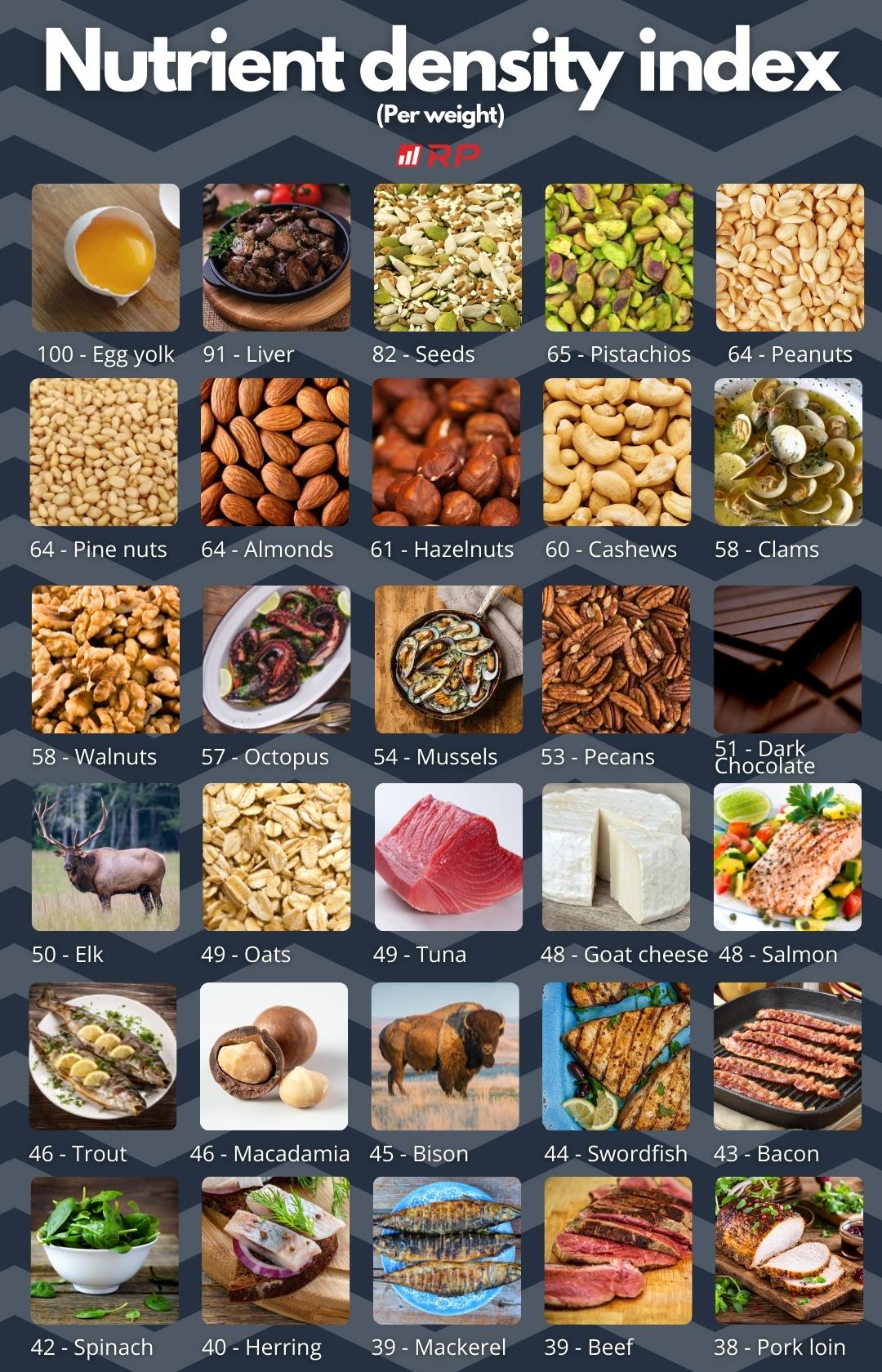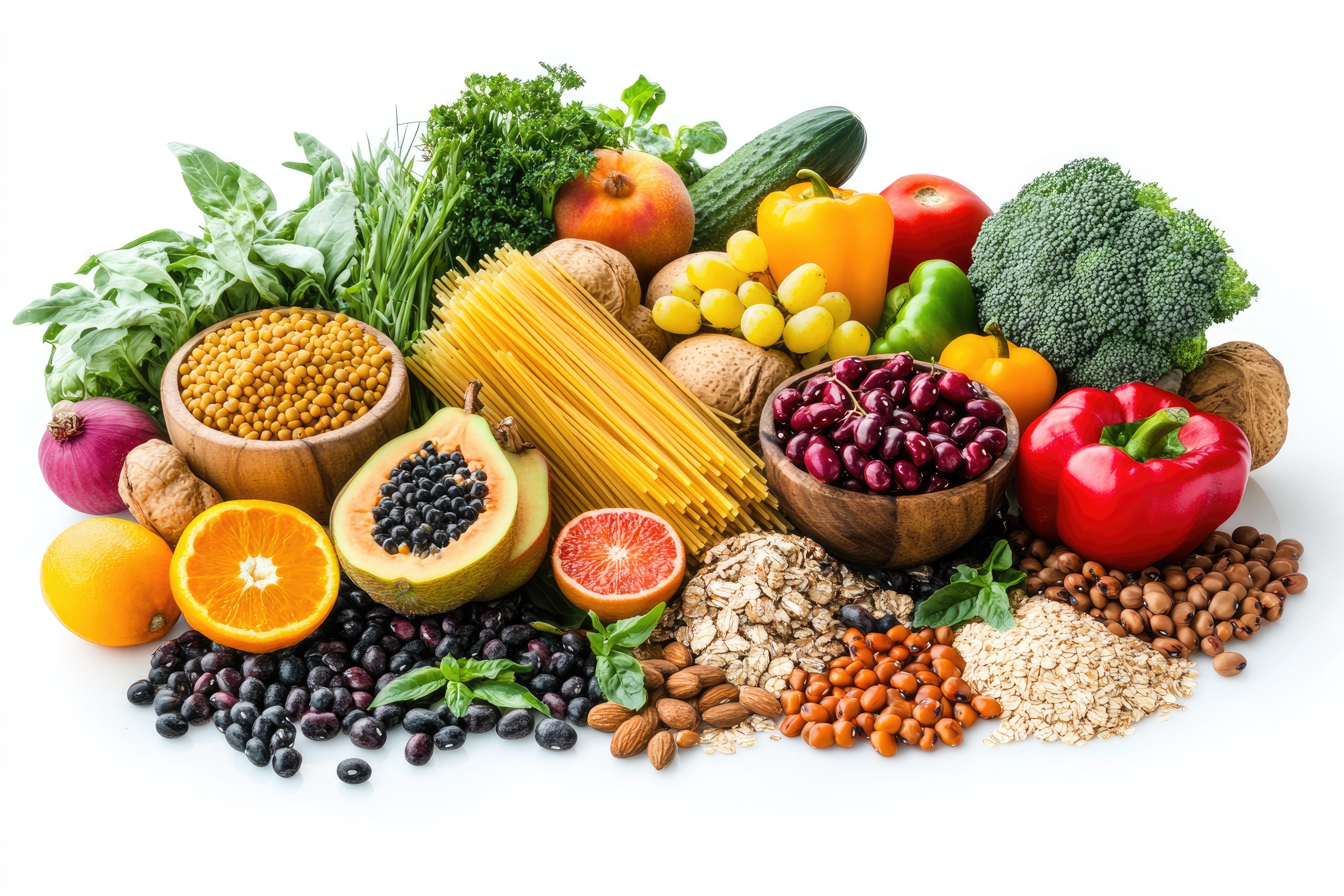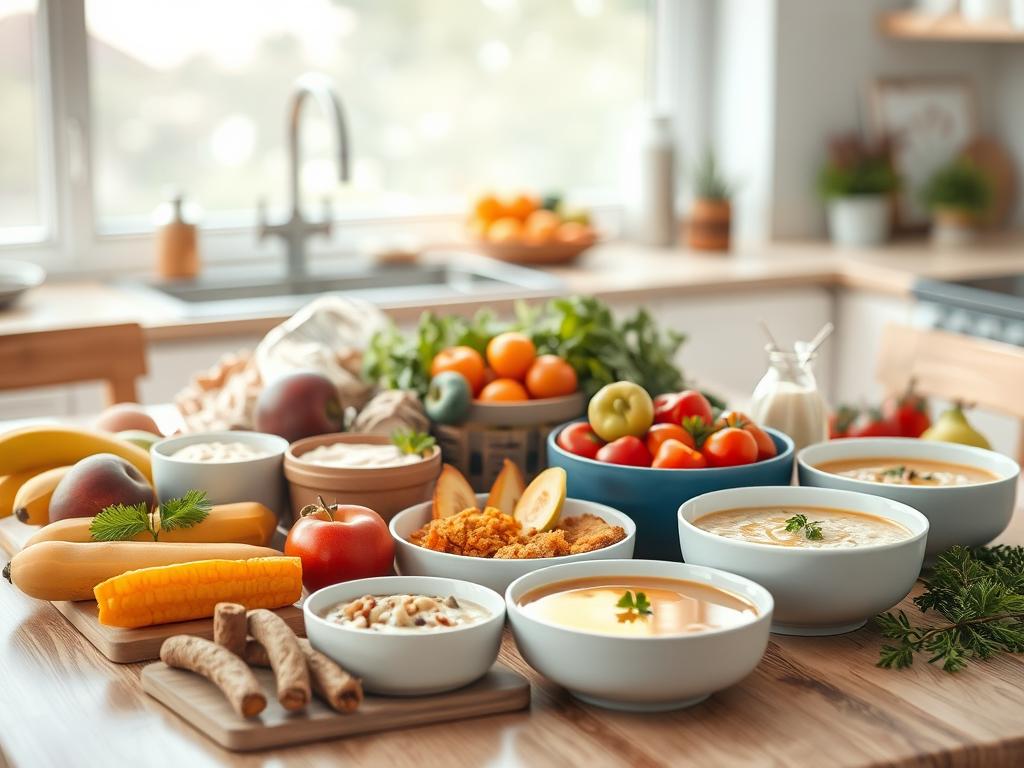Table of Contents
- Exploring the Concept of Food for Life and Its Impact on Wellness
- Nutrient-Dense Foods That Promote Longevity and Vitality
- Effective Meal Planning Strategies for a Healthier Lifestyle
- The Role of Superfoods in Enhancing Daily Nutrition
- Incorporating Mindful Eating Practices to Elevate Your Food Experience
- Q&A
- Key Takeaways


Nutrient-Dense Foods That Promote Longevity and Vitality
Incorporating a variety of nutrient-dense foods into your diet can significantly enhance your overall health and well-being. These foods are not only rich in essential vitamins and minerals but also provide the energy needed for an active lifestyle. Some of the best options include:
- Berries: Blueberries, strawberries, and raspberries are packed with antioxidants that help protect against cellular damage.
- Leafy Greens: Spinach, kale, and collard greens are high in iron, fiber, and a plethora of vitamins crucial for bodily functions.
- Nuts and Seeds: Almonds, walnuts, chia seeds, and flaxseeds are great sources of healthy fats, which support heart health and cognitive functions.
Whole grains play a vital role in a longevity-focused diet. Foods like quinoa, brown rice, and barley are excellent sources of fiber that not only help with digestion but also aid in maintaining stable blood sugar levels. Their high nutrient content can contribute to heart health and may lower the risk of chronic diseases. Consider these grains:
- Quinoa: A complete protein containing all nine essential amino acids.
- Oats: Known for their heart-healthy benefits and ability to reduce cholesterol levels.
- Brown Rice: A great source of magnesium, which is important for maintaining neurological health.
Don’t overlook the power of proteins in promoting vitality. Incorporate fatty fish like salmon and sardines, which are rich in omega-3 fatty acids and support brain health. Pair these with legumes such as lentils and chickpeas that are not only high in protein but also provide soluble fiber. Together, they form the perfect combination for a balanced diet. Here’s how they stack up:
| Food | Nutrients | Health Benefits |
|---|---|---|
| Salmon | Omega-3 Fatty Acids | Supports heart and brain health |
| Lentils | Protein, Fiber | Aids digestion and stabilizes blood sugar |
| Chickpeas | Protein, Iron | Helps in muscle growth and energy production |


Effective Meal Planning Strategies for a Healthier Lifestyle
Meal planning is an essential tool in creating a balanced diet and maintaining a healthy lifestyle. By dedicating time each week to strategizing your meals, you can save time, reduce food waste, and make healthier choices. Start by developing a weekly meal calendar, which serves as a visual guide to what you’ll eat each day. This not only helps with grocery shopping but also keeps you accountable. Here are some effective strategies to get you started:
- Set a Purpose: Decide if your goal is weight management, increasing energy, or trying new recipes. This will guide your decisions.
- Choose Recipes Wisely: Opt for simple dishes that can be made in batches, like soups, stews, or casseroles, which you can freeze for later.
- Involve the Family: Get everyone on board by planning meals together, ensuring preferences and dietary needs are considered.
This approach not only fosters a positive attitude towards eating but also keeps your meal preparation smooth. Additionally, using grocery lists can significantly streamline your shopping trips. By categorizing items into sections, such as fruits, vegetables, proteins, and grains, you can navigate the grocery store more efficiently. Below is a simple grocery list template to consider:
| Category | Examples |
|---|---|
| Fruits | Apples, Bananas, Berries |
| Vegetables | Spinach, Carrots, Broccoli |
| Proteins | Chicken, Lentils, Tofu |
| Grains | Quinoa, Brown Rice, Whole Wheat Pasta |
To maximize the benefits of meal planning, incorporate a variety of flavors and food groups into your dishes. Experiment with new ingredients to spice up your meals and keep things exciting. Consider prepping snacks that are healthy and easy to grab while on the go, such as mixed nuts, yogurt, or cut-up vegetables with hummus. With these practical strategies in place, you’ll find that meal planning can truly transform your relationship with food.


The Role of Superfoods in Enhancing Daily Nutrition
In recent years, superfoods have gained significant attention for their potential to elevate our daily nutrition. These nutrient-dense foods are packed with vitamins, minerals, and antioxidants, often delivering a punch of health benefits in a small serving. Incorporating superfoods into your meals can drastically improve your nutrient intake, making it easier to meet dietary recommendations without overwhelming your daily regimen. Foods like quinoa, chia seeds, and kale are not just trendy; they offer unique health perks that can be seamlessly integrated into our everyday diets.
One of the standout features of superfoods is their versatility in cuisines around the world. Whether you’re blending them into smoothies, tossing them into salads, or using them as meat substitutes, they allow for a world of culinary creativity. Here are some popular superfoods and their notable benefits:
- Blueberries: High in antioxidants, they support brain health.
- Kale: Rich in vitamins K, A, and C, it enhances bone health.
- Quinoa: A complete protein, great for vegetarians and vegans.
- Chia Seeds: Packed with omega-3 fatty acids, they promote heart health.
Moreover, the impact of superfoods extends beyond individual benefits; they contribute to overall wellness by fostering a balanced lifestyle. Many superfoods are known to support immune function, reduce inflammation, and even boost energy levels. Transitioning to a diet rich in these foods can lead to sustainable health improvements. Below is a simple comparison of select superfoods and their attributes:
| Superfood | Nutrients | Key Benefit |
|---|---|---|
| Avocado | Healthy fats, fiber | Promotes heart health |
| Spinach | Iron, calcium | Boosts energy |
| Matcha | Antioxidants, caffeine | Enhances focus |


Incorporating Mindful Eating Practices to Elevate Your Food Experience
Practicing mindfulness during meals can transform your relationship with food, allowing you to savor each bite and reconnect with your body’s natural hunger cues. Start by eliminating distractions during mealtime. Turn off the TV, put down your phone, and create a calm space where you can fully concentrate on your meal. This not only enhances your enjoyment but also helps you recognize when you’re satisfied. Pay close attention to the colors, textures, and aromas of your food; this sensory engagement can deepen your appreciation and greatly enhance the eating experience.
Another effective technique is to engage your senses with each bite. Before you eat, take a moment to observe your food. Consider the following elements:
- Appearance: What colors stand out?
- Smell: What aromas are present?
- Texture: How does it feel in your mouth?
Creating a balance between eating and thinking is essential in mindful practices. One effective approach is to incorporate the following principles into your daily routine:
| Principle | Description |
|---|---|
| Gratitude | Pause before meals to express appreciation for your food. |
| Portion Awareness | Serve smaller portions to encourage mindful eating and reduce waste. |
| Reflection | After meals, take a moment to reflect on how you feel both physically and emotionally. |
Q&A
Q&A: Understanding “Food for Life”
What does “Food for Life” mean?
Food for Life refers to a holistic approach to nutrition that emphasizes the importance of consuming whole, unprocessed foods that nourish both the body and mind. This concept encourages people to opt for natural foods rich in essential nutrients, promoting overall well-being and longevity.Why is the concept of “Food for Life” important?
The importance of “Food for Life” lies in its potential to transform health outcomes. By focusing on nutrient-dense foods, individuals can combat lifestyle-related diseases, boost their immune systems, and improve mental clarity. Ultimately, “Food for Life” is about fostering a deeper connection to what we eat and understanding how our food choices impact our health and environment.What types of foods are included in the “Food for Life” philosophy?
The “Food for Life” philosophy embraces a wide variety of foods, including:- Fruits and vegetables: Fresh, frozen, or dried varieties, emphasizing seasonal and local produce.
- Whole grains: Brown rice, quinoa, oats, and whole wheat products that provide fiber and complex carbohydrates.
- Legumes: Beans, lentils, and peas, which are excellent sources of protein and essential nutrients.
- Nuts and seeds: Almonds, walnuts, chia seeds, and flaxseeds that provide healthy fats and antioxidants.
- Natural sweeteners: Honey, maple syrup, and dates, used in moderation as healthier alternatives to refined sugars.
How does ”Food for Life” impact mental health?
Research suggests that a nutrient-rich diet can have a profound impact on mental health. Foods encouraged in the “Food for Life” philosophy are high in antioxidants, vitamins, and minerals, which can help reduce inflammation and support brain function. Eating a balanced diet can elevate mood, improve cognitive function, and even reduce anxiety and depression symptoms.How can I incorporate “Food for Life” into my daily routine?
Incorporating “Food for Life” into your daily routine can be both simple and enjoyable. Here are a few suggestions:- Plan your meals: Take time each week to plan healthy meals and snacks around whole foods.
- Cook at home: Experiment with new recipes that highlight fresh ingredients and limit processed foods.
- Shop smart: Fill your grocery cart with a variety of whole foods, and aim for the perimeter of the store where the fresh produce is typically located.
- Stay informed: Read books, blogs, or watch documentaries about nutrition to inspire your culinary journey.




0 Comments